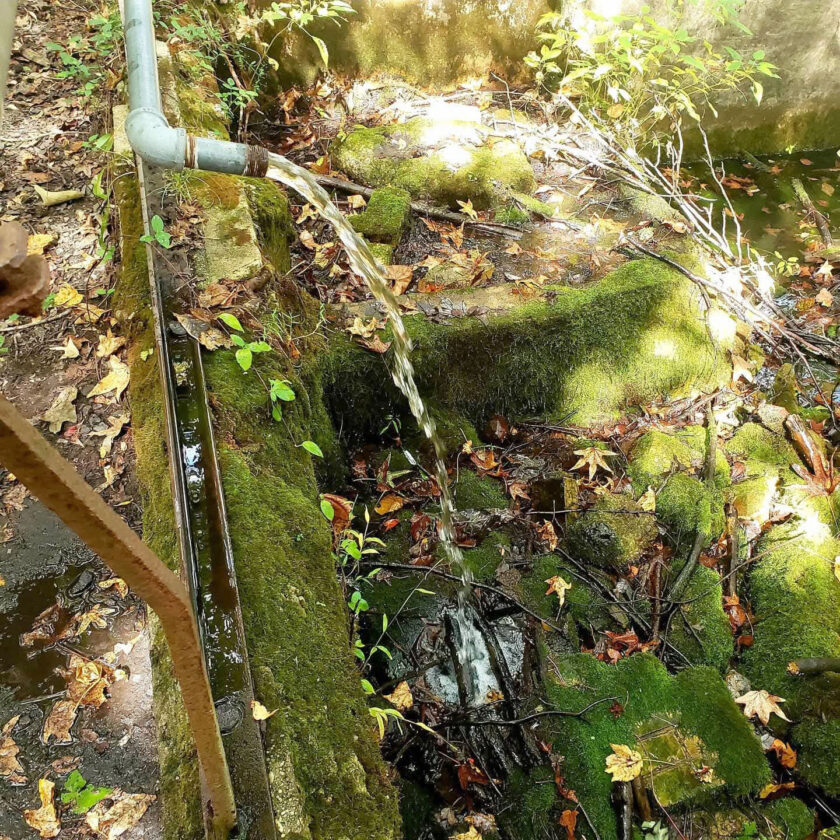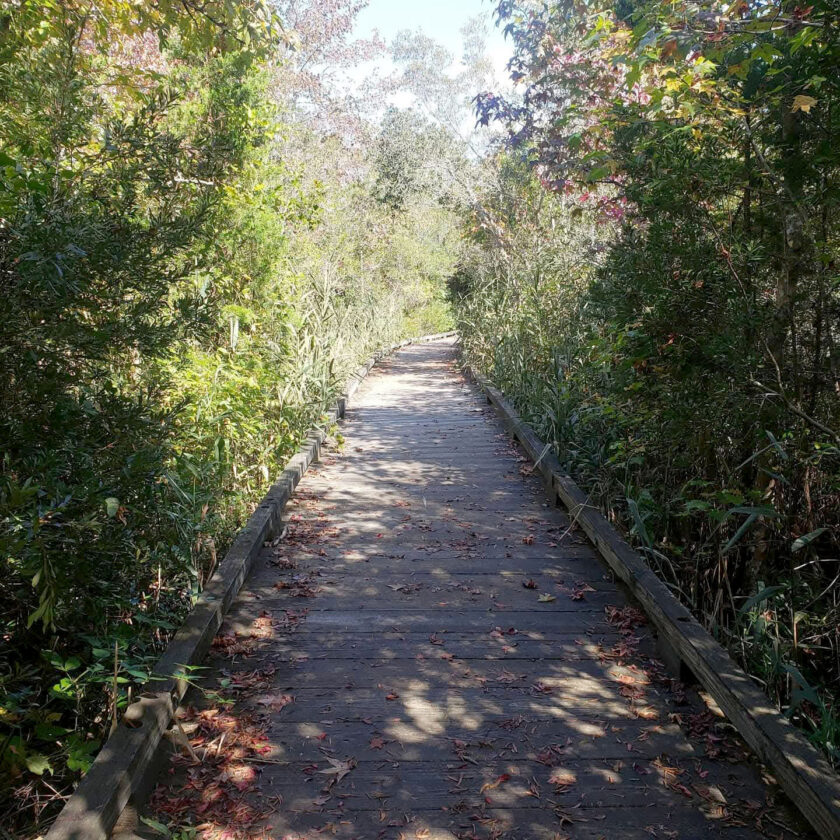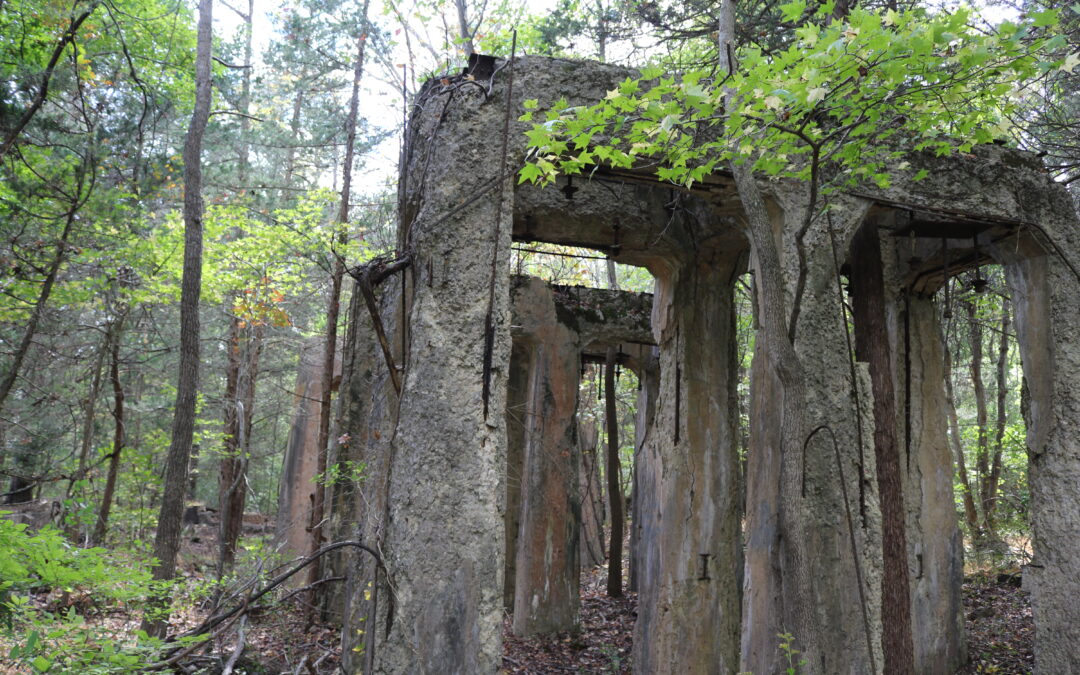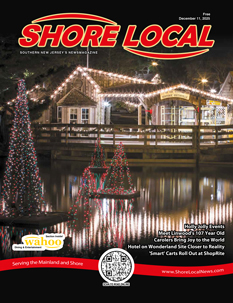Estell Manor Park is one of Atlantic County’s most significant historic and recreational sites.
Located just south of Mays Landing on N.J. Route 50, this 1,700-acre county park combines the natural beauty of the Pinelands with preserved remnants of South Jersey’s early industries. Visitors can explore hiking trails, the Warren E. Fox Nature Center, the ruins of a glassmaking village, a World War I munitions plant and several historic cemeteries that tell the story of one of the region’s earliest settlements.
Before the land became a county park, it was owned by the Estell Family, a name that remains central to the area’s identity.
In the early 1800s, Daniel Estell co-owned and operated the Estellville Glassworks, an industrial site that thrived on the natural resources surrounding it. The sandy soil provided the key ingredient for glassmaking, while nearby forests offered the wood needed to fire the furnaces. Finished goods such as window glass, bottles and decorative pieces were transported by boat along the Great Egg Harbor River to markets throughout the East Coast.
In 1832, Joseph West built a sandstone manor house for his sister, Maria West, and her husband, Daniel Estell, as a wedding gift. Daniel Estell lived there until his death in 1858.
The home, built of sandstone, still stands today near the entrance to the park and has been transformed to the county Veterans Museum. The last family member to reside there was Rebecca Estell Bourgeois Winston, Daniel’s granddaughter, who lived in the home her entire life. She made history in 1925 when she became the first woman in New Jersey to be elected mayor.
A new chapter in Estell Manor’s history began in 1918 when the United States government selected part of the site for the Bethlehem Loading Company, a munitions plant built during World War I. In a matter of months, the pine forest transformed into a sprawling industrial complex with factories, rail lines and housing for workers.
Although the plant operated for only a short time, its impact was significant. When the war ended later that same year, the complex was quickly shut down. The site was later stripped of metal for salvage during World War II, leaving behind the concrete foundations and skeletal ruins that remain today.
Among the most distinctive remnants from that period is the Artesian Well, located near the South River just beyond the ruins of the old power plant. The well, estimated to reach more than 170 feet deep, was drilled to provide fresh water for the Bethlehem Loading Company facility. It still flows naturally with cold groundwater, even after a century.

Estell Manor Park also preserves several small cemeteries that offer insight into the lives of early settlers. Deep in the woods lies the Smith-Ireland Cemetery, a small, fenced-in burial ground containing the graves of members of the Smith and Ireland families. Among them is Japhet Ireland, a Revolutionary War soldier who died in 1810. His headstone, though weathered by time, remains legible and serves as a tribute to the area’s earliest generation of patriots.
Another small family plot known as the Steelman’s Creek Cemetery, is located near the Atlantic County Veterans Cemetery. It is believed to contain the remains of Frederick Steelman, a member of the Gloucester County Militia during the Revolutionary War. Many of the graves there are unmarked and the surrounding landscape has gradually softened the edges of the old headstones.
Just outside the park’s boundaries, the Head of the River Church Cemetery further connects the region to its Revolutionary War past. The church, originally built in 1792, is one of the oldest Methodist congregations in New Jersey and includes the graves of Captains Jeremiah and William Smith — brothers who both served in the Revolution. These nearby historic sites together form a network of early-American history that complements the park’s industrial and natural legacy. Over time, Atlantic County acquired the land and incorporated it into its park system, ensuring the preservation of both its history and ecology.
Today, Estell Manor Park is managed by the county’s Division of Parks and Recreation, which maintains its trails, picnic areas and Nature Center, while continuing restoration efforts to protect the park’s historic structures and natural habitats. The division also provides educational programs and recreational opportunities that connect visitors to the park’s unique blend of history and environment.

The Warren E. Fox Nature Center, located within the park, serves as an educational hub. Inside where visitors can find taxidermy and educational displays featuring nearly every species that lives within the park, from native birds and reptiles, to small mammals and amphibians. The center also provides maps and exhibits about local wildlife, and panels detailing the history of Estellville. In addition, it hosts environmental programs and guided hikes that introduce visitors to the park’s ecosystems and layered past.
For those exploring on foot or by bike, the park offers a variety of trails suited for all skill levels. The Swamp Trail is a popular, wheelchair-accessible boardwalk loop which winds through cedar wetlands and along the South River, offering opportunities to see turtles, herons and other native species. The History Trail and Munitions Trail lead visitors through the ruins of the glassworks and the remains of the World War I industrial complex, with signs explaining each site’s significance. Picnic areas, playgrounds and pavilions make the park a frequent destination for locals and visitors seeking a mix of recreation and education.
Estell Manor’s lasting importance lies in how it preserves multiple eras of Atlantic County’s story in one landscape. From the craftsmanship of early glassmakers and the ambition of wartime builders, to the family cemeteries tucked quietly in the woods, the park reflects more than two centuries of change.
Whether you come to bike the shaded trails, visit the Veterans Museum, or pause beside the Artesian Well, Estell Manor Park offers a rare connection between history and nature. It stands as a reminder of South Jersey’s industrial past and a peaceful refuge where the Pine Barrens continue to thrive.
Catherine is a recent Communication Design graduate from Elon University. When she’s not designing, she’s experimenting with new recipes, working on creative projects, or hunting for vintage treasures. She can be reached at catpepe72@gmail.com

















